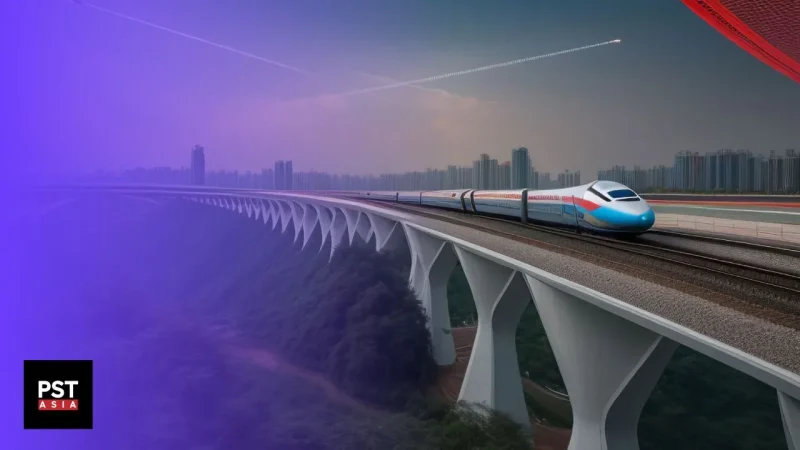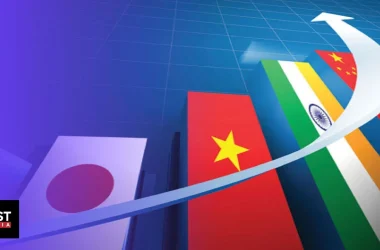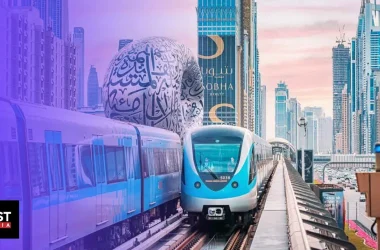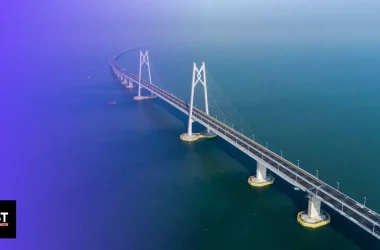Thailand is adding to the Belt and Road Initiative’s landmark infrastructure project, the China-Laos railway, by finally agreeing to resume construction on the abandoned China-Thailand high-speed railway.
The plans for a high-speed railway in Thailand are 13 years old, and construction was delayed on them several times. However, the new Thai government and prime minister are keen on completing this project with China’s help.
This railway is another ambitious project under the BRI, planning to link Thailand and China through Laos, in order to increase regional integration between China and countries in Southeast Asia.
The project is expected to cost Thailand a total of $8.5 billion, and it’s the sole investor for it, with China only providing its technology and expertise.
Will the new Thai government successfully see this massive project to its completion, in the face of political and financial risks?
Thailand’s First High-Speed Railway
During the third Belt and Road Forum in Beijing, Thailand’s Prime Minister Srettha Thavisin stated that the Thai government is committed to accelerating the construction of the China-Thailand High-Speed railway, after multiple long delays.
He said in an interview with Xinhua that logistics and infrastructure are Thailand’s main concerns regarding its cooperation with China in the Belt and Road Initiative, or BRI.
Additionally, he promised that the China-Thailand railway project, which connects the Chinese city Kunming to the Thai capital Bangkok through Laos, would enhance the connection between railways in Thailand domestically, and with the China-Laos Railway, another BRI project in the region.
The Idea Is Nothing New
In fact, discussions of a high-speed railway in Thailand go back to 2010, when it was first announced that Thailand would start negotiations with China, the world leader in high-speed rail, to build five new railway lines in Thailand.
Three years later in 2013, the Thai transport minister revealed that only one company will be selected to run all high-speed train routes, in order to avoid the high costs that would arise from having to operate four different train systems.
However, a political crisis, which involved the dissolution of parliament and an annulled election, happened in 2014. This was followed by a military coup, and the military ordered all high-speed rail plans to be put on hold until a civilian government was elected.
After the coup, its leader, Prayut Chan-o-cha, became prime minister. During his time in office, he proposed connecting the capital city Bangkok to Pattaya and Hua Hin, two resort cities that were popular with tourists, via high-speed rail. In addition to that, four high-speed rail projects were included in Thailand’s investment plan in 2017.
Regarding the China-Thailand railway, Prayut Chan-o-cha’s government decided to fully fund the project’s cost of $5.4 billion in 2016, rejecting Chinese loans. China instead agreed to provide its technology and expertise in the field. The governments of the two countries agreed that the project would be completed by 2028. This is another reason for the project’s delay, as Thailand was struggling with fiscal problems.
But what really affected the project, and Thailand’s economy as a whole, was the Covid-19 pandemic.
The pandemic was disastrous for Thailand, whose tourism sector contributes to its GDP by 18%. This caused Thailand’s GDP to fall by 6.1% in 2020, the largest contraction in the country since the Asian Financial Crisis in 1997. In turn, the Thai people protested against Prayut Chan-o-cha’s government, and he lost the 2023 elections.
Construction Under The New Thai Government
Back to where Thailand is today, with a new government and a new prime minister, Srettha Thavisin. This new government pledged to prioritize improving the Thai economy over anything else, and by stating his intentions to move forward with the project, the new prime minister is sending a clear message about the government’s dedication to its main goal.
When it’s fully complete, the China-Thailand high-speed line will run 608 kilometers from Bangkok northeast to Nong Khai on the Laos border. From there, it will join the China-Laos line at the Laotian capital, Vientiane, which runs to the Chinese city of Kunming, the largest city in the Yunnan province.
Currently, the construction is going smoothly, with the 250.77 kilometers section between Bangkok and a province called Nakhon Ratchasima already 40% completed. The second section will connect Nakhon Ratchasima and Nong Khai, and it will be submitted to the cabinet for approval soon, according to the deputy permanent secretary of the transport ministry.
Even under the new government, the project faced a couple of problems, including delays in land expropriation and a change in design from ground-level track to elevated track for certain contracts. Additionally, a new environmental impact assessment was required, and construction overlapped with that of another project, causing it to slow down.
Despite all of this, the project is still expected to be opened for the public in 2027.
Why Is Thailand Building It?
It’s no surprise that the Thai government is so eager to finish a large-scale project like this one, as the economy needs a strong boost. Over the past 10 years, Thailand’s GDP grew by only 1.8% per year on average, and household debt increased from 76% of GDP to 91% at present.
This especially causes concern for the country because Thailand’s household debt-to-GDP ratios are the highest in Asia and rank 10th globally.
Thus, megaprojects like this high-speed railway are needed in Thailand, and are seen as a catalyst for stimulating economic growth in the entire region. It is expected to increase the connection between Southeast Asian countries, and help them gain more opportunities in regional and international markets.
Also, the project will reduce the cost of cargo transport by 30% to 50% in the next three to five years between China, Thailand and Laos. It is a perfect example of a BRI project that will increase regional integration and technology transfer.
China’s Growing Influence
Even though the project will possibly lead to mutual benefits between countries in the region, it could still cause trouble for Thailand. For instance, the country’s national sovereignty could be threatened by the close ties to southern China the project would create.
Many countries in the world, including most western countries and many southeast asian ones that neighbor Thailand, have geopolitical tensions with China, which could create problems for Thailand.
More doubts are raised over whether Thailand actually needs this project or not, since a rail connection to Nong Khai already exists, and the new thing this project is offering is a link with China and Laos.
There are also concerns over the environmental and social impacts of the project, and demands for the Thai government to be more transparent regarding the construction.
High-speed railway projects are known for their high costs, and this one is no different, requiring $5.1 billion for the first phase, and $8.5 billion overall. Since Thailand is the sole investor in the project, potential financial challenges may appear in the future, so the costs and budget must be managed very carefully to protect the country’s financial health.
Disclaimer
Please visit and read our disclaimer here.









